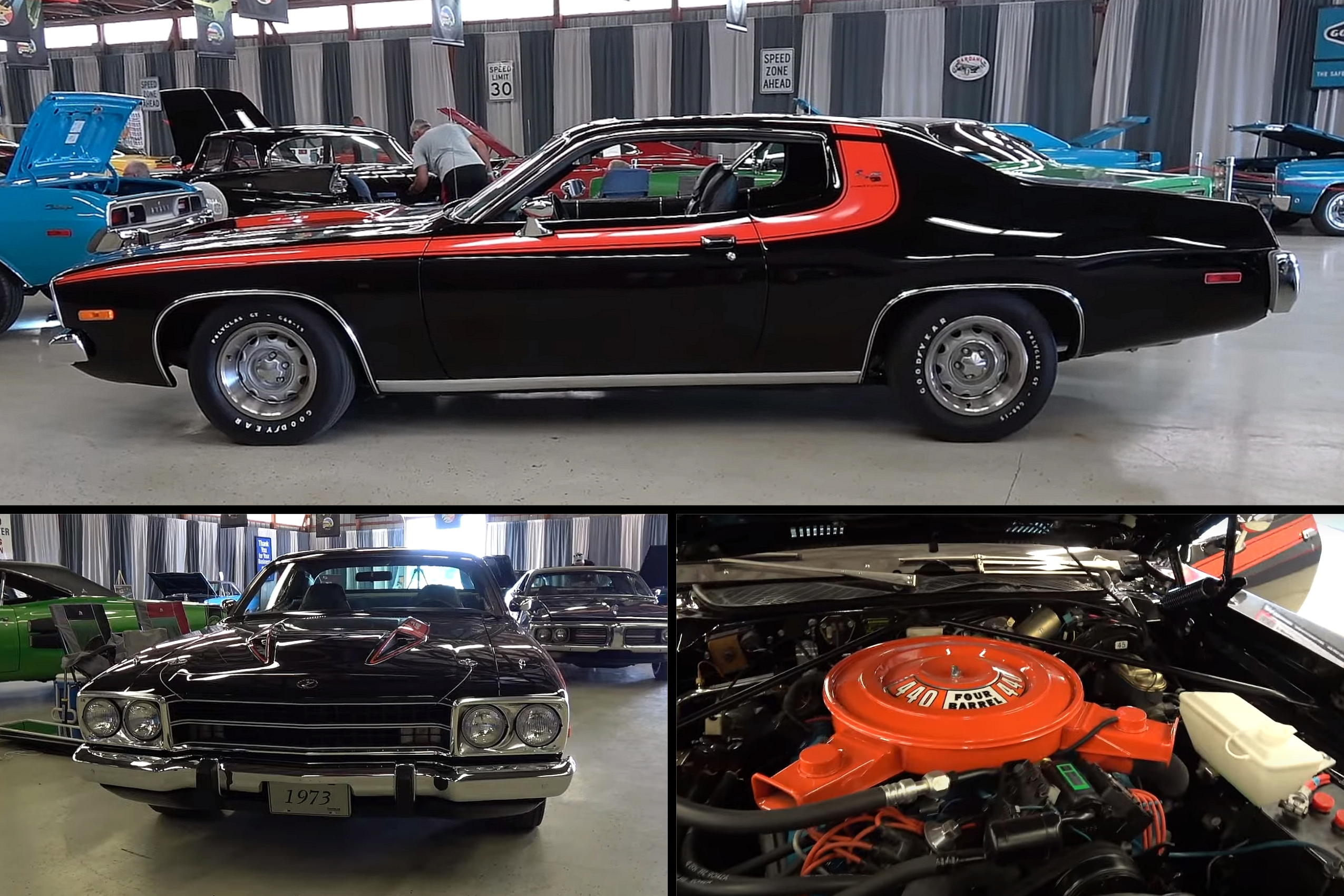When it comes to the Road Runner and the GTX, two of Plymouth’s most iconic nameplates, we usually think about examples from the golden muscle car era. And that’s mainly because Chrysler dropped the 426-cubic-inch (7.0-liter) HEMI and the 440-cubic-inch (7.2-liter) Six-Pack after the 1971 model year.
Plymouth also discontinued the GTX for 1972. Launched in 1966 as a fancied-up version of the two-door Belvedere, “the gentleman’s muscle car” went into the history books simply because it lost two of its three engines in late 1971. The Road Runner, on the other hand, remains in production through 1975 (and until 1980 as a trim package).
But even though the GTX disappeared as a stand-alone nameplate, the badge survived until 1974 as a Road Runner option. Specifically, all 1972-to-1974 Road Runners ordered with the range-topping 440 V8 were fitted with “GTX” logos.
So why isn’t the post-1971 Road Runner getting as much love as its predecessors? Well, as I mentioned earlier, it’s mainly due to the demise of the HEMI and the Six-Pack engines. Many Mopar enthusiasts aren’t fond of the 1973 redesign either.
Granted, the 1973-1974 Road Runner looks a tad conventional with that squared-up front fascia, but it’s still a muscular design overall. And I love the hockey stick stripe that runs from the upper C-pillar to the corner of the headlamp. And while it may not have a HEMI or a Six-Pack, the late second-gen Road Runner did come with a four-barrel 440 good for a solid 280 horsepower.

That’s a net figure, by the way, which means the engine was capable of 340 to 350 gross horsepower. For reference, the four-barrel 440 V8 of the golden muscle car era generated 375 gross horsepower. All told, the 1973 Plymouth GTX was no lemon. And while many of these cars are rotting away in junkyards, some are getting the love and attention they deserve. Like this 1973 example finished in TX9 Black, a finely restored model that looks better than new.
Spotted at the 2023 Chrysler Nationals in Carlisle, Pennsylvania, this red-striped black Mopar is more than just a run-of-the-mill Road Runner that looks fantastic for its 50th anniversary. It’s also a rare gem and one of the most highly optioned examples of its kind.
What makes it rare, you ask? Well, although Plymouth sold almost 16,000 Road Runners in 1973, only 749 vehicles were ordered with the 440-cubic-inch V8 and the “GTX” badge that came with it. That’s less than 5% of the total production that year. Moreover, this GTX was also ordered with a sunroof, one of the rarest options on 1973 Road Runners.
Plymouth sold just 414 units with this feature, but this number includes regular Road Runners, too. There’s no official info on how many sunroof cars were also GTXs, but we’re probably looking at fewer than 100. Then there’s the options list, which includes more than 20 items.
In addition to the sunroof, the original owner also augmented the interior with power windows, a center console, the Decor Group, a rear window defogger, and AC. Exterior extras include dual chrome mirrors, wheel lip and wide sill moldings, and red stripes for a sharp contrast against the black paint. The GTX also packs front disc brakes and a 3.55 Sure Grip rear axle for enhanced performance.
